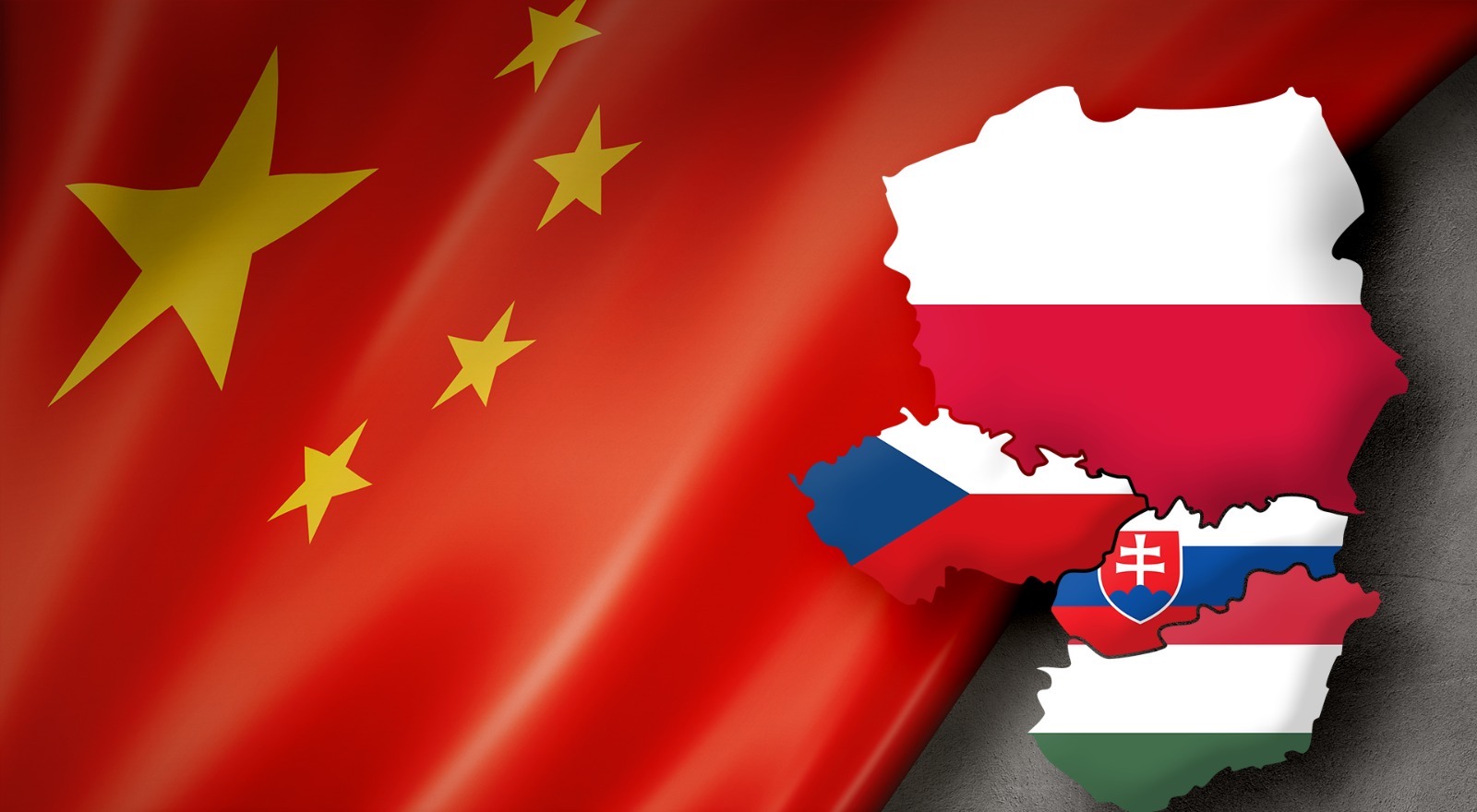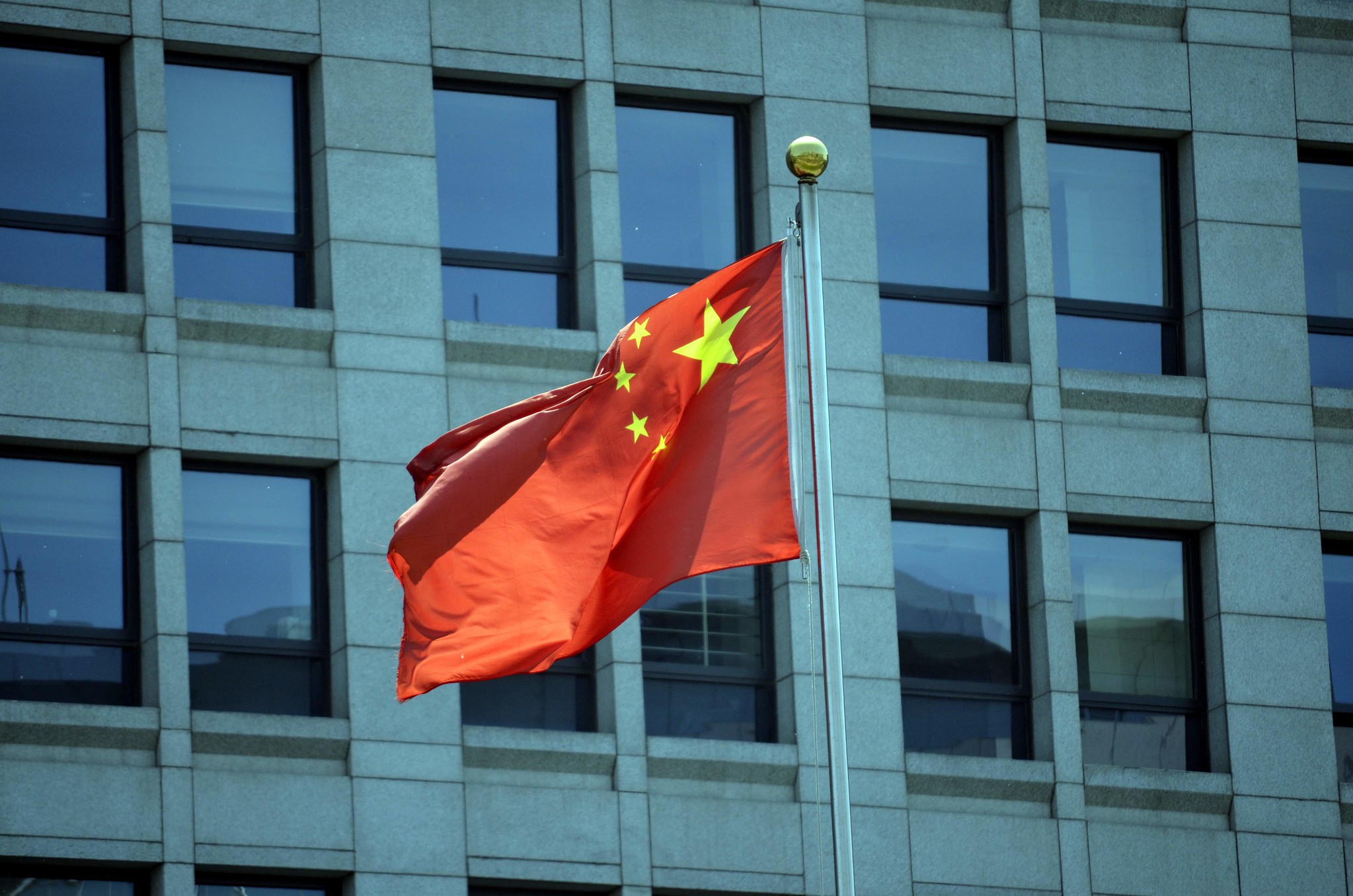
THE ROLE AND INFLUENCE OF THE PEOPLE’S REPUBLIC OF CHINA ON VISEGRAD GROUP COUNTRIES. The aim of the project is to monitor the activities of the PRC in relation to the V4 countries – Poland, Czechia, Hungary and Slovakia. The project is funded by the International Visegrad Fund.
Date: 17 January 2022 Author: Łukasz Kobierski
Czech and Slovak Intelligence Report on China
Czech and Slovak intelligence and counterintelligence agencies mention the threat from China in their reports more and more often. The growing importance of the PRC and its attempts to influence these countries are closely monitored. The degree of danger is frequently compared to Russian actions.

On December 1, 2021, the Slovak Information Service (Slovenská informačná služba, or SIS) published the unclassified part of the SIS 2020 Annual Report.[1] It was presented during the closed part of the plenary session of the National Council of the Slovak Republic. The report consists of seven chapters.
In the section devoted to the economy, Slovak officials note China’s growing global economic influence, its assertive foreign economic policy. They have also examined the possible implications of this influence on Slovakia.
China received the most attention in the chapter on security. According to Slovakia, China’s intelligence services are increasingly active, as outlined in the “counter-espionage protection” section of the report. They are using a whole-of-society approach to promote their interests abroad, where all sectors of the Chinese state, business, and culture are coordinated and involved in promoting the interests of China. The diaspora also plays a vital role, penetrating key sectors in Slovakia. Among others, its members participated in securing medical supplies from China to Slovakia and tried to take advantage of the situation to establish contacts with representatives of the new government.
According to the intelligence agency of the Slovak Republic, lobbying efforts were also continued to promote the involvement of Chinese telecommunications companies in the construction of 5G networks in Slovakia. Chinese technology corporations continued the attempts to join important market niches, including the field of technology capable of monitoring data flow and communications or space and people’s movement. It was announced that a law on monitoring foreign investment would be drafted, with SIS involved in its creation. China was not mentioned on the occasion, but it can be assumed that this bill will be prepared with this country in mind.
The section on hybrid threats concluded that China continued its efforts to influence public opinion, spread propaganda, and build a positive image of China. Some individuals and institutions acted in Beijing’s favor and sought to neutralize negative media coverage of the PRC in the context of the COVID-19 pandemic outbreak. Disinformation activities were pointed out. Since the pandemic began to spread in Europe, various pro-Chinese media outlets promoted the effectiveness of strict security measures introduced in the PRC. Additionally, Chinese medical aid to European countries, which were supposedly harmed by the inaction of EU institutions, was reiterated.
China was mentioned for the last time in the “foreign security” section, under the “crisis and conflict areas” subsection. There it was stated that China has been monitored by the SIS as an emerging power with global ambitions that seeks to influence the events in Europe and undermine Euro-Atlantic security architecture. Slovakian intelligence services were also observing developments in China to see if the coronavirus that caused the COVID-19 pandemic originated there.
Moreover, the Slovak Military Intelligence included China in its annual report.[2] Matej Šimalčík, MapInfluenCE analyst and member of China Observers in Central and Eastern Europe (CHOICE), notes that this is the first time the Military Intelligence has directly mentioned the PRC in its annual document. For comparison, the SIS has been doing so for three years.[3]
China was also mentioned (along with Russia) in the “activities of foreign intelligence services” chapter. According the Slovak Military Intelligence, Chinese agents are trying to infiltrate the Ministry of Defense to gain access to classified information. They are also active in industrial espionage, copying selected products and later producing them under their own brand name.
China was likewise included in the “illicit trade in defense industry products” section. The PRC was listed explicitly, among Russia and the United Arab Emirates, as an export destination of electronic, telecommunication, and signaling equipment and software.
In late November 2021, the Czech Security Information Service (BIS) published the Annual Report of the Security Information Service for 2020.[4] A separate subsection in the “intelligence and subversive activities targeting the Czech Republic” chapter was devoted to China (right after Russia and before Iran). According to the Czech counterintelligence, China poses a complex and growing intelligence threat. It is becoming obsolete to indicate who is a Chinese intelligence officer because every Chinese citizen is obliged, by law, to support Chinese intelligence services. This applies also to organizations and companies. A refusal would involve serious repercussions for them.
Despite flight and movement restrictions to the Czech Republic, Chinese intelligence services operated mainly under diplomatic and journalist cover. They were most active in the realms of politics as well as scientific and technical intelligence. Chinese intelligence operates in Czech academic institutions through intensive information operations. An influence on politics has also been noted. Chinese intelligence officials have been very successful in building relationships with those active (or influential) in politics, regardless of ideological views.
Several operations have also been conducted to shift the blame for the COVID-19 pandemic to Western countries and to disrupt political and economic relations between the Czech Republic and Taiwan. As a part of these operations, intelligence officers, diplomats, and members of party organizations sought ways to influence public opinion in order to spread Chinese propaganda. They also built a positive image of the PRC. Moreover, the intelligence services influenced the content that appeared in the media.
The last paragraph of this chapter featured the “Made in China 2025” program, under which China continued its efforts to acquire advanced technologies and related know-how from abroad, including the Czech Republic. According to the Czech counterintelligence services, Beijing is seeking to acquire new technologies, including robotic and autonomous systems, 3D printing production, and nanotechnology. Chinese entities have also been attempting to acquire interesting Czech companies and to move production to China. In the following parts of the report China was not mentioned. Interestingly enough, Chinese cyberattacks, which were discussed in the previous report, among others, were not addressed.
Both Slovakia and the Czech Republic, as well as other countries in the region, are closely monitoring the activity of Chinese intelligence services. The awareness of the dangers coming from Beijing is growing, which is reflected in reports of intelligence and counterintelligence agencies. A few recurring types of activities of Chinese intelligence services can be identified: promoting a good image of China, using the diaspora for their activities, lobbying – mainly at technology companies – disinformation and spreading propaganda, attempts to undermine the image of the European Union, industrial espionage, attempts to obtain confidential/classified information, attempts to take over companies that are relevant to the state’s interest, purchase of dual-use goods, activity in academic institutions, attempts to influence politicians and other influential people, as well as disturbing relations with Taiwan. This is certainly not a closed list. The intelligence services of both countries have listed only the most important ones. It is becoming more and more common to list the PRC along with the Russian Federation on the basis of the threats associated with them, which is different from the situation a few years ago. Additionally, the report contains a moral for the V4 states, but not only them. Similar techniques and activities are also used in other parts of the world.
[1] https://www.sis.gov.sk/for-you/sis-annual-report.html
[2] https://vs.mosr.sk/documents/sprava_o_cinnosti_vs_2020_eng.pdf
[3] https://twitter.com/MatejSimalcik/status/1466392970379374604
[4] https://www.bis.cz/annual-reports/annual-report-of-the-security-information-service-for-2020-a290d510.html
Support Us
If content prepared by Warsaw Institute team is useful for you, please support our actions. Donations from private persons are necessary for the continuation of our mission. Support
This article is a part of the project “The Role and Influence of the People’s Republic of China on Visegrad Group Countries” funded by the International Visegrad Fund.
All texts published by the Warsaw Institute Foundation may be disseminated on the condition that their origin is credited. Images may not be used without permission.
















